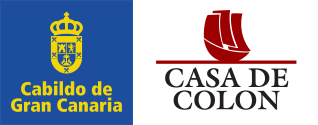Costa de Mosquitia: en la encrucijada de los procesos atlánticos y las ambiciones locales / The Mosquito Coast: at the crossroads of the Atlantic flows and local ambitions
Palabras clave:
Costa de Mosquitia, sistema atlántico, sistema mundial, imperialismo, criollización, Iglesia morava, siglo XIX, The Mosquito Coast, the atlantic system, the world system, imperialism, creollization, the Moravian Church, 19th centuryResumen
La Costa de Mosquitia, área fronteriza del dominio colonial español de Centroamérica, llegó a ser durante el siglo XIXun punto de intersección de los intereses imperiales de Gran Bretaña, Estados Unidos, así como de las repúblicas de Centroamérica o varios estados alemanes. Hasta el año 1860 una entidad política, el «Reino Mosquito» existió en la costa bajo el protectorado de Gran Bretaña; entre 1860 y 1898 el territorio constituyó una «reserva» semiautónoma dentro del estado de Nicaragua; solamente después se realizó su «reincorporación» formal. Testigos y participantes de este episodio de la historia de la Costa de Mosquitia fueron los misioneros de la Iglesia Morava. Sus textos, junto con los documentos oficiales británicos de Foreign Office de Londres, constituyen la base principal del presente análisis de los procesos sociales y culturales que tuvieron lugar en la región, complementando la perspectiva local con los grandes proyectos imperiales que fueron desarrollados de parte de los poderes europeos y americanos.
The Mosquito Coast, a frontier region of the Spanish colonial possessions in Central America, was at the crossroads of the imperial interests of Great Britian, the United States of America, the Central American republics and various German states in the 19th century. The Mosquito Kingdom was in existence through until 1860 under the protectorate of Great Britain. Then between 1860 and 1898, the territory was a semi-autonomous «reserve» within the state of Nicaragua, only to be later «reincorporated» formally. The witnesses and participants in this phase of the history of the Mosquito Coast were the Moravian Church missionaries. Their texts, together with the official British documents in the Foreign Office in London, constitute the basis of the present analysis of the social and cultural processes that took place in the region as manifest in the local perspective, by way of complement to the grand imperial designs of European and American powers.








